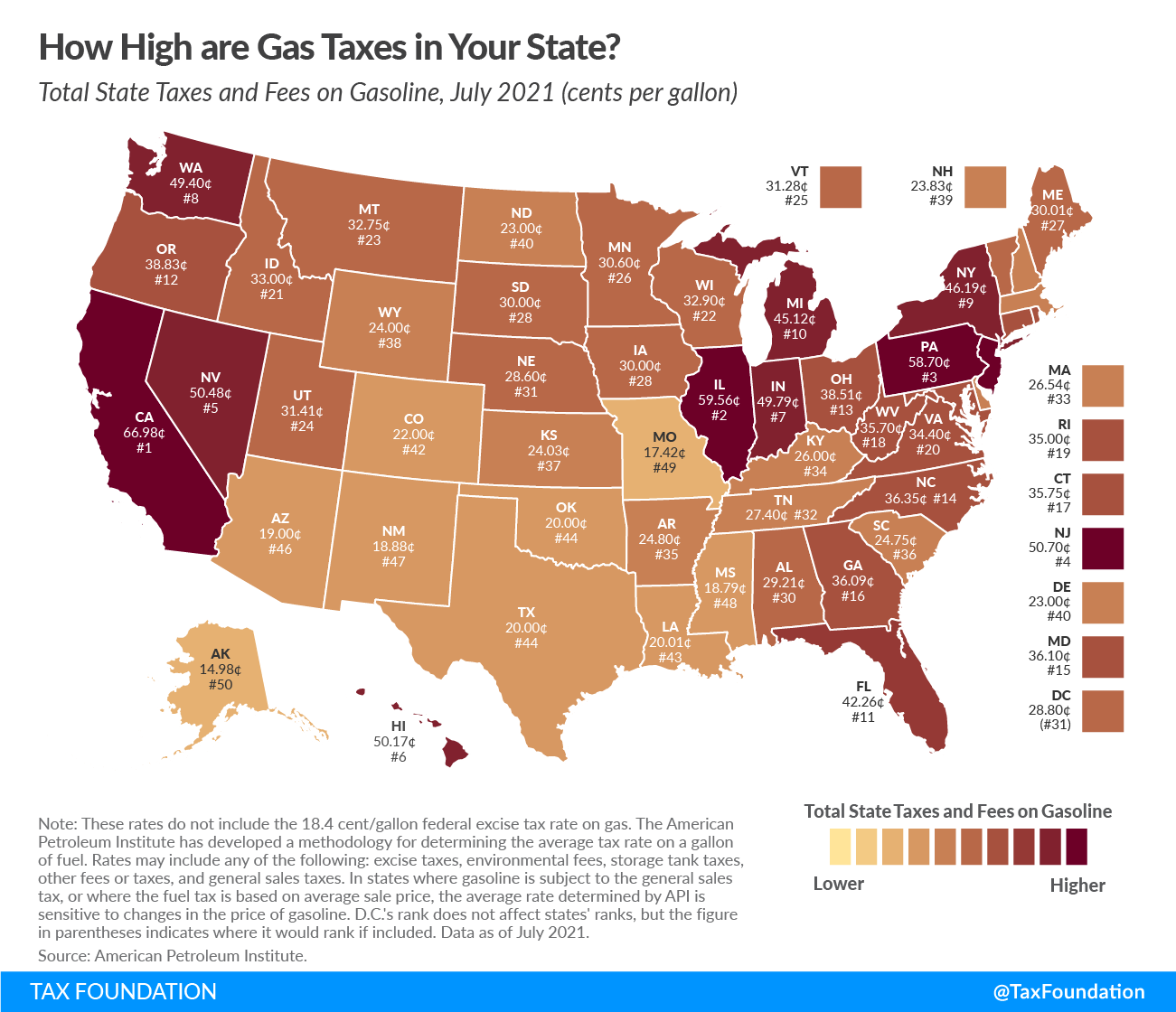This map shows state gas taxA gas tax is commonly used to describe the variety of taxes levied on gasoline at both the federal and state levels, to provide funds for highway repair and maintenance, as well as for other government infrastructure projects. These taxes are levied in a few ways, including per-gallon excise taxes, excise taxes imposed on wholesalers, and general sales taxes that apply to the purchase of gasoline. rates as of July 2021, using recently released data from the American Petroleum Institute.
States levy gas taxes in a variety of ways, including per-gallon excise taxes collected at the pump, excise taxes imposed on wholesalers (which are passed along to consumers in the form of higher prices), and sales taxes that apply to the purchase of gasoline. The American Petroleum Institute accounts for these different approaches when it calculates the average tax rate on a gallon of gas in each state. These rates vary widely from state to state and can be seen in the map below.
California pumps out the highest state gas tax rate of 66.98 cents per gallon, followed by Illinois (59.56 cpg), Pennsylvania (58.7 cpg), and New Jersey (50.7 cpg). The lowest state gas tax rates can be found in Alaska at 14.98 cents per gallon, followed by Missouri (17.42 cpg) and Mississippi (18.79 cpg).
While few taxpayers are cheerleading gas taxes, these systems embody the “benefit principle” of taxation relatively well. This public finance concept holds that the taxes a person pays should relate to the government services that person receives. In general, drivers benefit from the services that their gas taxA tax is a mandatory payment or charge collected by local, state, and national governments from individuals or businesses to cover the costs of general government services, goods, and activities. dollars pay for, like road construction, maintenance, and repair. Because gas taxes connect drivers to the costs of road upkeep, they encourage efficient road use, which helps limit congestion and the wear and tear that comes from overuse.
However, the federal government and many states have not indexed their specific rates for inflationInflation is when the general price of goods and services increases across the economy, reducing the purchasing power of a currency and the value of certain assets. The same paycheck covers less goods, services, and bills. It is sometimes referred to as a “hidden tax,” as it leaves taxpayers less well-off due to higher costs and “bracket creep,” while increasing the government’s spending power. , leading the real value of gas tax revenue to fall behind infrastructure spending needs across the country. Gas taxes also face a narrowing base, as the improvement in vehicles’ fuel economy along with the growth in sales of electric vehicles distorts the tax’s connection to vehicle-driven externalities. One long-term solution would be to turn to a tax on vehicle miles traveled to ensure that those driving on the roads are paying for the roads, though this raises privacy concerns that have yet to be adequately resolved. In the short term, states that have not done so should index their gas taxes to inflation, creating a more stable revenue source to fund infrastructure maintenance and repair.
How does your state compare?
Related Research
Stay informed on the tax policies impacting you.
Subscribe to get insights from our trusted experts delivered straight to your inbox.
Subscribe